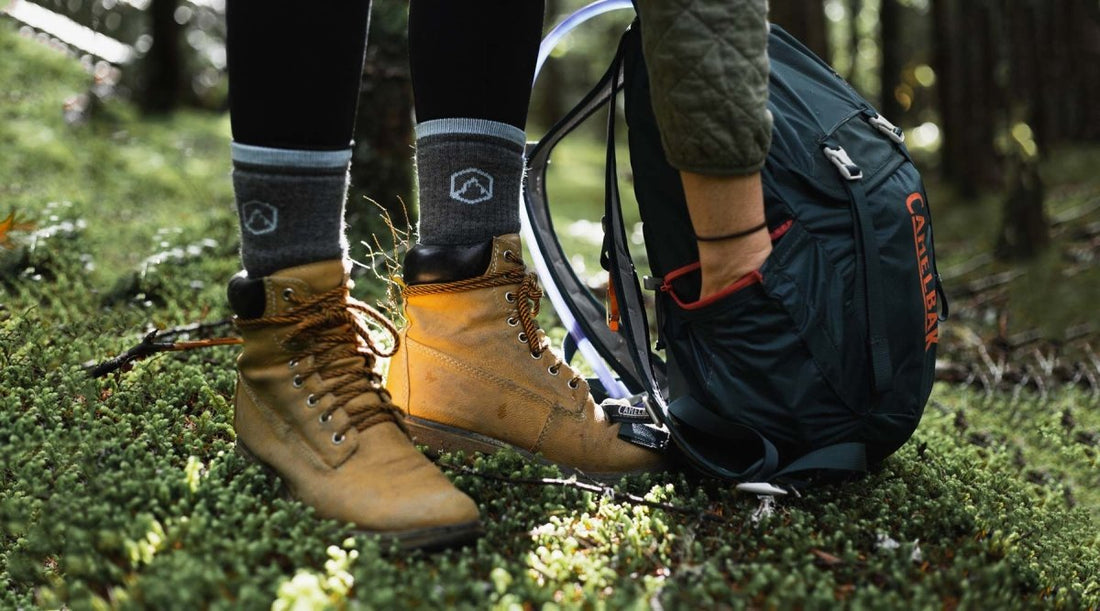
A Guide to Investing in Essential Hiking Gear
My first pair of sturdy, quality hiking boots changed my outdoor experience. Before them, I tumbled around awkwardly in slippery, ill-fitting, non-breathable (and somehow also non-waterproof) boots, coming away from hikes happy but covered in scrapes, bruises, and favoring tender limbs. My arches would ache, and eventually, the dull pain would spread to my leg joints.
Then I bought “my blue boots.” The most significant outdoor purchase I had ever made, I was unconvinced that they would be worth it. Now, without a doubt in my mind, I can say they were absolutely worth the price.

With these boots, I descended into the Grand Canyon and climbed above 14,000 feet. They were comfortable, practical, and the aches I felt before vanished. I tried new things in them, hiked familiar trails in them, and finally, I took my last backpacking trip in them. I wore those boots until they were practically decomposing beneath me.
So far in the Beginner’s Guide to Hiking Series, we have covered the best ways to get cheap gear and how to safely hit the trail with the 10 Essentials on a budget. I am not recommending that you personify your outdoor gear and get unreasonably attached as I have definitely done with my blue boots, but there comes a time when the hikes ahead call for wise, long-term investments. Here is your guide on which items are worth the cost, and how to pick the right gear for you!
Understanding Outdoor Gear

A common mistake that people make when buying outdoor gear is treating it like an everyday clothing purchase. Outdoor gear costs more because it is better made for keeping your active, moving body comfortable in specific, harsh conditions. $20 sandals will still get you from the car to the coffee shop, but $20 hiking shoes will probably not get your sweaty feet through mud, puddles, and rocks over any significant distance. To begin shopping for investment-worthy outdoor gear, first be of the mindset that it is worth the investment.
Outdoor gear companies are well-known for excellent warranties, guarantees, and return policies, making your purchase far more certain to fit your needs. For example, all Osprey Packs come with an “All Mighty Guarantee,” meaning that you can have your pack repaired of any manufacture defect or wear-caused damage, at any point after the pack was purchased, for free of charge. When buying on Osprey pack, it could very well be the only pack in its size and functional area that you every purchase.
Companies like Patagonia and Arc’teryx will repair products due to wear-and tear for a reasonable charge. Members at REI can return or exchange gear within a year of purchase if dissatisfied for any reason, giving customers the chance to actually test new gear in the environment and context they will use it it in.
With companies set on making high-performing gear to last the test of time, it is easier to swallow the cost of shiny new outdoor staples. Bottom to top, here are the things to carefully consider investing in to power you on more adventures.
Hiking Shoes/Boots
Option A: Hiking Boots

Who Should Get Them:
The traditional, iconic mark of an outdoorsy person, hiking boots are an excellent option for adventurers who expect versatility out of their gear. Boots come in a vast variety of weights and types, overall giving ankle support and providing a sturdy body. Any hiker who would like to use these shoes for long, rocky hikes, backpacking, or wet terrains should opt for a boot. The high tops prevent ankle turns and twists, and also help keep out deep mud, snow, and water. For hiking in multiple seasons, different terrains, and with additional weight on your back, pick out some boots.
Option B: Hiking Shoes/ Trail Runners

Who Should Get Them:
Lower cut than hiking boots, hiking shoes can be found in many of the same varieties as boots: waterproof, breathable, full shaft (how stiff the bottom is) and flexible. If you want shoes for primarily fair-weathered hikes, these will cut the weight of boots significantly while still giving you the traction and stability you need for straightforward day hikes.
Overlapping categories are trail runners, which are lighter and more flexible than most hiking shoes, but still offer a grippy tread and sturdy body. If you want to try trail running or are looking for an ultra-light, flexible hiking shoe for sunny days on defined trails, trail runners will be great for you.
What To Look For:
- Waterproofing
In hiking boots, hiking shoes and trail runners, narrow your options by first deciding on waterproof or non-waterproof shoes. While waterproof shoes will keep the water out, bear in mind that they also keep water in. Any water that gets into the shoes or sweat from your feet will not dry quickly. For an all-season staple, find a waterproof shoe that is designed to breathe well. Check reviews on different shoes and waterproofing brands, like Gore-Tex, to find the best of both worlds. For a happy-hiking summer shoe to keep your feet dry and airy, skip the waterproofing.
- Tread
Next, examine the tread. Tall, spike-like protrusions from the sole of the shoe are called “aggressive tread.” Bottoms with an aggressive tread that feels bendable to the touch are usually made out of a softer rubber, which will give you great grip on rocks or slippery terrain. However, soft rubber bottoms wear down quickly if worn on pavement or asphalt, so shoes with only soft rubber need to be reserved for hiking alone.
Hard rubber, which is not bendable and slips easily, will last on pavement but will hurt you on the trail. Ideally, try to find a shoe with a mixture of the two or with soft rubber that you are ready to care for.
-Cushion
Personal needs and preference should be your guide when deciding on a level of cushion in your hiking shoes, because you will be the one clocking miles in them. Barefoot theory shoes, (like Altras) which tend to feature little cushion, a flat footbed and a wide toe box offer a natural and connected feel. If you are not familiar with this type of shoe, be sure to walk around in them before deciding to get used to the lack of lift in the heel and sense of the ground beneath you. On the other side of the spectrum are highly cushioned shoes, which give you an airy, almost bouncy energy and lift. These shoes, like Hoka One Ones, mask the changes in the earth beneath you and keep your joints from pounding the surface over and over again.
Between the two are every variety and level between, offering you options to fit your needs.
When Buying Hiking Shoes:
- Try on many styles, fits and brands to find the most comfortable fit
- Walk around in them and mimic movements you will make on the trail
- Try them on with socks of varying thicknesses if you plan to hike in many seasons
- Ask questions at your local gear shop
- Look over product and model reviews before buying
- Do not get talked into something you do not need or will not use, even if it sounds awesome at the time
Hiking Socks

Good hiking socks make this list because they can make the difference between staying dry, comfortable and warm on the trail and feeling cold, wet, and gross as you walk. When buying, you need to find socks made entirely out of one or multiple warm-when-wet materials, like merino wool or synthetics. Cotton socks will be slow to dry, and lose all thermal capabilities once they are wet.
Who Should Get Them:
Any hiker who does not have comfortable socks made out of warm-when-wet materials needs hiking socks.
What to Look For:
- Height
If you choose hiking boots, make sure that your socks are taller than the boots. Give them a little room to slide down slightly, where your ankle and lower leg will still be protected from rubbing. For hikers who choose shoes or trail runners, find socks that sit at a comfortable level with your new kicks.
- Thickness
Fair weathered hikers or hikers with sweaty feet should find some light or ultralight socks to wick away moisture and dry quickly. Depending on your sensitivity to cold, proneness to blisters, and the environment you will be hiking in, choose medium to heavy weight socks that fit your needs.
When Buying Hiking Socks:
- Check to make sure that all materials are either wool or synthetic
- Read reviews on socks to find a durable, high performing fit
- Support a sustainable, American-made brand with a fantastic lifetime guarantee by shopping at Cloudline
Rain Jacket / Shell

Who Should Get One:
Even if you are not planning to hike often in rainy weather, every hiker needs a reliable rain jacket. Though the weather report might not predict a cloud in the sky, even perfect summer days turn into afternoon showers without letting you know. This piece will be with you on every expedition, in every season you hike in.
What to Look For:
- Waterproof vs Water Resistant
There is a very important difference between water resistant and waterproof. While a water-resistant jacket will only keep you dry in a light shower for a short amount of time, any serious precipitation will eventually soak through and get both you and your other gear wet. Especially for hikers seeking to go longer distances and get outside in multiple seasons, a waterproof jacket is the best choice. Only jackets with sealed zippers (either covered with a shiny, rubber-like material or covered by a flap of waterproof fabric) and sealed seams can be fully waterproof.
- Breathability
Just like with hiking shoes, waterproofing can make gear less breathable. Since you will be using this jacket while working up some heat on the trail, look for a fully waterproof jacket with good breathability. You can read reviews and tech specs, or ask questions at your local gear shop to find the best mix for you.
- Insulation
The term “shell” means that this jacket is the outermost layer of your hiking system, and, just like tacos, there are both soft shells and hard shells. Soft shells feature insulation, while hard shells do not. Finding a jacket that layers well with the clothes and jackets you wear hiking is essential, regardless of which you choose. For versatility across seasons, a hard shell is the best choice.
- Layers
Rain jackets come in three levels of layers: 2 layer, 2.5 layer and 3 layer. For hiking, you should be looking for a 2.5 or 3 layer jacket. While 3 layer jackets provide a durable outer fabric, a waterproof membrane, and a protective inner material to keep you constantly dry, 2.5 layer jackets will do the job for many day hikers at a cheaper price. If you plan to wear this jacket in harsh conditions, all seasons, or in the backcountry, then try to find a 3 layer that fits your needs. If you see yourself only using it when needed in mild to moderate conditions, a 2.5 layer could help your wallet.
When Buying a Rain Jacket/Shell:
- Try it on with all of your base and mid layers. Make sure it is comfortable and fully covers your other tops
- Look at the hood. Can you put the hood up and down and still have your neck fully covered?
- Notice the pockets. Do they sit higher than your hips, where you can use them with your hip belt still on?
- Check for ventilation. Many shells with have ventilating zippers (called “pit zips”) that fall along the sides of the jacket. For hiking in warm weather, these help you stay drier inside
- Look over reviews and ask questions at your local gear shop
- Try on a few jackets from different brands to find a fit you like
Daypack

Who Should Get One:
All hikers who do not currently have a day pack made out of a durable material that can fit their layers, the ten essentials, and still have a little space for a trail journal, camera, thermos or other extras need a daypack.
What to Look For:
- Capacity
Outdoor packs are measured in two ways: capacity and torso size. The capacity of the backpack is measured in liters it can hold, and the numbers are usually written on the outside of the bag. For day hiking, you want a bag somewhere around 20-30 liters in capacity. In this range are quite a few styles and varieties, all suited for different needs. If you are planning on primarily enjoying short hikes in good weather, you can opt for a bag with a lower capacity. If you want to hike long distances or are ready to pack along gear for inclement weather, a higher capacity bag will adapt well to different situations. To help you know what size to buy, gather everything you would pack on a hike in one place. Consider if there would be room inside to fit a jacket you wore to begin but no longer needed while hiking, and the ease of getting to important items.
- Size
Surprisingly, backpacks come in sizes like XS, S, M, and L. This size is based on the length of your torso, and it is crucial to get a bag that fits correctly. Go to your local gear shop to get measured for free, and to become familiar with sizing differences between brands. This size is important because a correctly sized bag will fit closely against your back, allowing comfort as the pack’s weight rests evenly on your hips. While at the gear shop, you can learn how to adjust the backpack correctly, and try a few on with varying amounts of weight. Small, light daypacks sometimes only come in one size, but they tend to run in both men’s and women’s models. Women’s backpacks are designed with a narrow body, curved shoulder straps, and shorter sizing.
- Features
For a hiker, your backpack’s convenience and practicality are just as important as comfort. When looking over a hiking day pack, check for a rain cover. If not included, consider that you will need to buy one along with the bag. Next, look for compatibility with a hydration bladder. If you are wanting to use a hydration bladder, this could be an essential in the bag you buy. For hikers without hydration bladders, see if there are external holders for your water bottles. As a bottle-carrier, I would not buy a hiking bag without two external water bottle holders. Take time to notice the suspension of the bag and its cushioning. Will the hip belt be comfortable enough over distance? How structured is the pack? Deciding on these features will likely be the ticket to selecting a bag that you love!
When Buying A Daypack:
- Always try on each bag you are considering with a reasonable amount of weight (you can do this at any shop that sizes and sells packs)
- Take note of loops and hooks that you can use to carry trekking poles or rolled jackets externally
- Think not only in terms of what you do now, but consider some of your outdoor goals (Ask, “How versatile is this backpack?”)
- Mentally plan where you will store what items on the trail (“Are these pockets useful and easy to access?”)
- Lastly, do not buy a backpack before you have gathered the ten essentials. You can not make an informed backpack decision before you know what all needs to come along on every hike!
Take a deep breath - it can be a lot of information and decision making for beginning hikers to start building their outdoor gear staples.
Remember to have fun, and that these are items that will help you safely get deep into nature and stay healthy.
Ready to elevate your hikes? These investments will be worth it, if you use them, and they might even inspire you to take on some fresh challenges!
Have you ever had a piece of gear that you loved? Tell us about it in the comments below.
Happy gear-shopping!

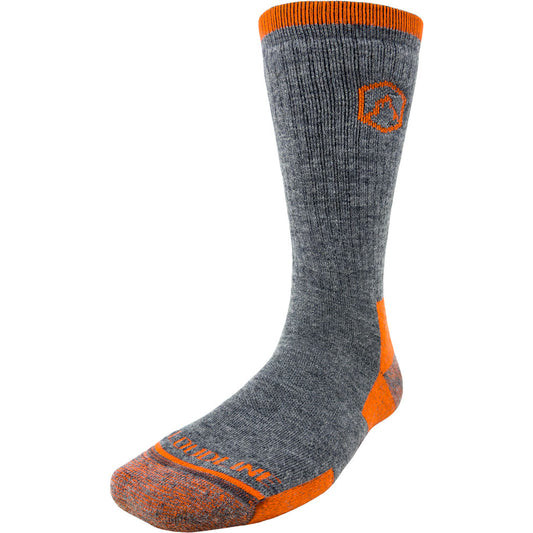
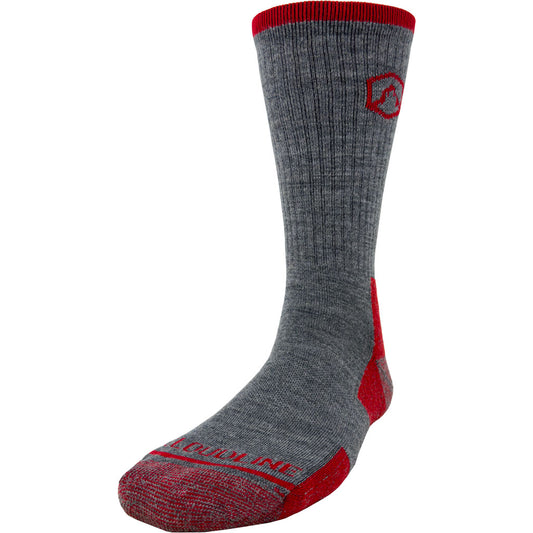
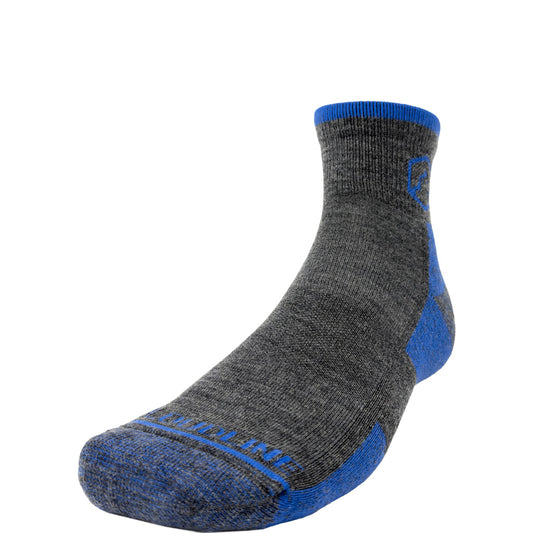
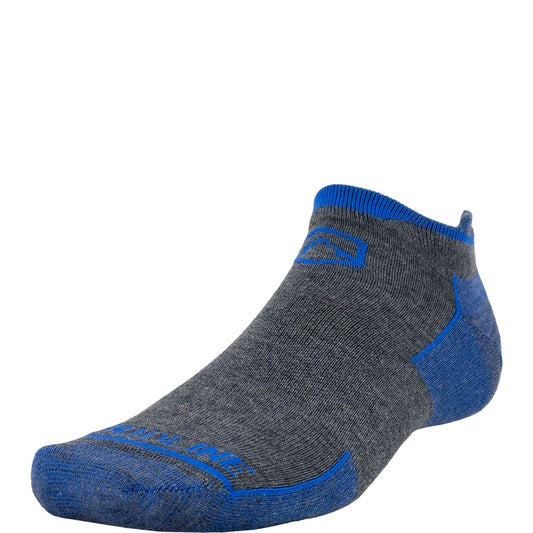
2 comments
Hey Helen! I am so glad you enjoy the blog. I had a pair of Ahnu Sugarpine boots in the bright blue color! The model I had was a lightweight, synthetic outer with full waterproofing. I absolutely LOVED them!
Hi Erin,
You mention your “blue boots” , where can I find information on them. I’m curious because I’ve never heard of them. When I look up blue boots, lol, I of course, get lots of blue fashion boots! Enjoying your articles, very informative.